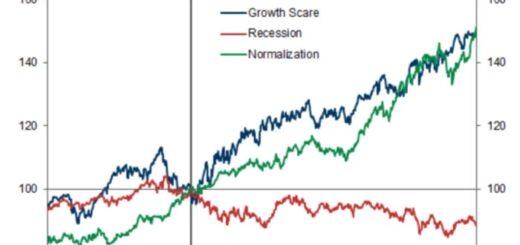Testing Resilience: US Stock Rally Faces Red Sea Tension Headwinds
An assault on a U.S. warship and commercial vessels in the Red Sea is sparking concerns among investors regarding a potential escalation in the Israel-Hamas conflict. This development adds complexity to the recently optimistic outlook for the U.S. stock rally, which achieved a new closing high for the year just last week. Confirming the reports, the Pentagon acknowledges the attacks, while Yemen’s Houthi group claims responsibility for drone and missile strikes on Israeli vessels. The situation is further complicated by a U.S. self-defense strike in Iraq against an imminent threat at a drone staging site.

There is growing apprehension that the Israel-Hamas conflict might expand into a more widespread regional conflict involving the U.S. and other key players such as Iran. Such concerns had surfaced earlier after Hamas’ attack on southern Israel on October 7 but had subsided in the intervening weeks.
In response to these developments, S&P 500 futures experienced a 0.2% decline in Asian trade on Monday. Although Brent crude futures initially rose, they later slipped by 0.8% to $78.27 a barrel, and gold reached a record high of $2,111 per ounce.
Quincy Krosby, Chief Global Strategist at LPL Financial, warns that an expanding conflict could lead some investors to cash in on recent stock gains. The S&P 500, which surged nearly 9% in November on the back of easing inflation signs and optimism about the Federal Reserve halting interest rate hikes, is now up almost 20% for the year, reaching a 2023 closing high of 4594.63 on Friday.
Krosby emphasizes the market’s sensitivity to conflict expansion, suggesting that active managers may secure gains if the situation implies a deeper military conflict involving the U.S.
Historically, spikes in geopolitical tensions prompted investors to seek safe havens like gold, Treasuries, and the U.S. dollar. A deepening Middle East conflict could also boost oil prices, which had seen a decline in recent weeks.
Phil Orlando, Chief Equity Market Strategist at Federated Hermes, anticipates that rising tensions could drive West Texas Intermediate crude prices to a range of $80-$90 per barrel.
Investors closely monitor upcoming factors that could impact stocks, including the U.S. employment report due on Friday, the Fed’s monetary policy meeting on Dec. 12-13, and seasonal influences like tax-loss selling and the “Santa Claus rally.”
Orlando acknowledges the potential for a spike in geopolitical tensions to cause a drop in the S&P 500 by “one or two hundred points” but remains confident that the index will end the year at 4,600.




